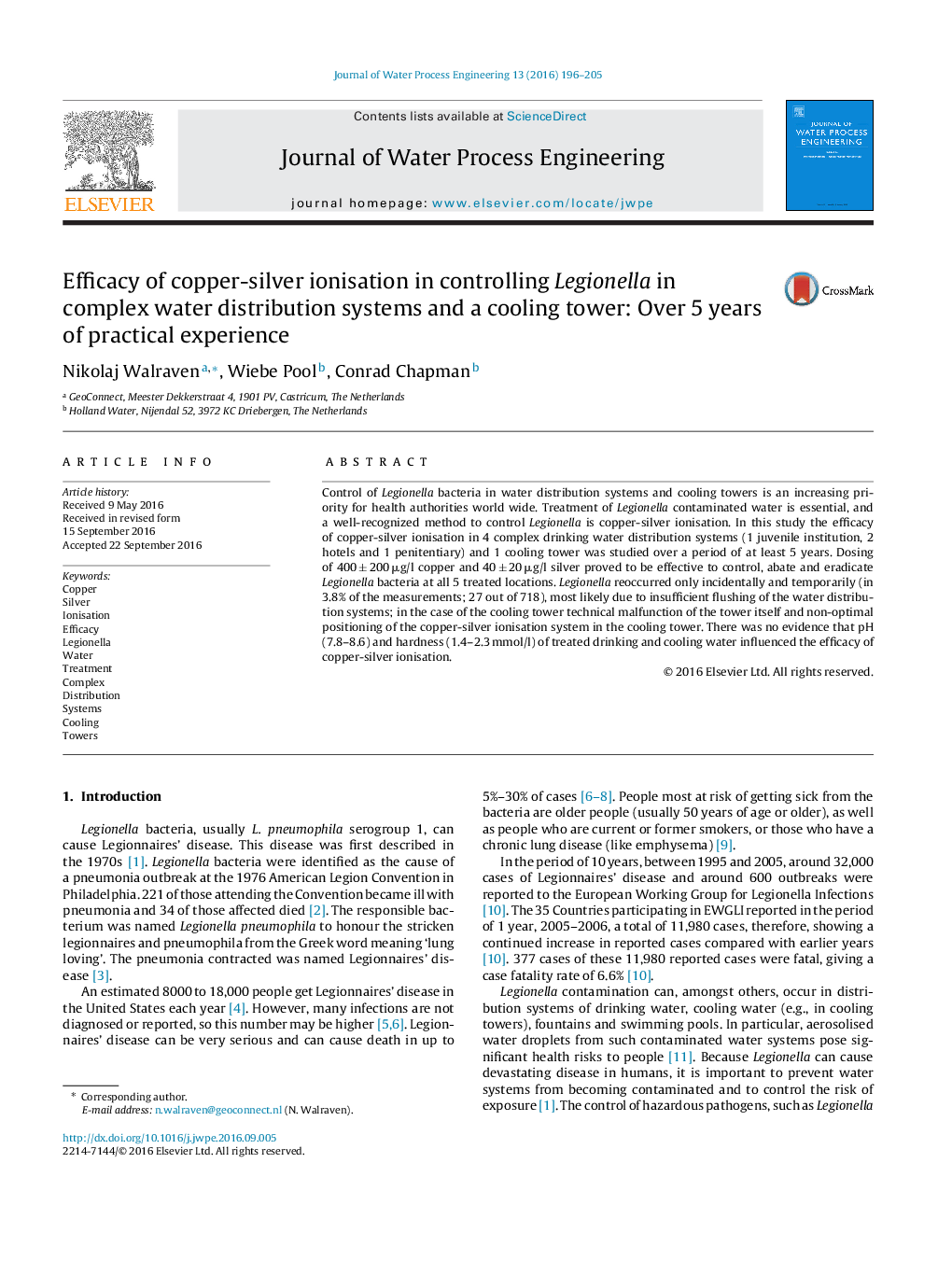| Article ID | Journal | Published Year | Pages | File Type |
|---|---|---|---|---|
| 4909959 | Journal of Water Process Engineering | 2016 | 10 Pages |
Abstract
Control of Legionella bacteria in water distribution systems and cooling towers is an increasing priority for health authorities world wide. Treatment of Legionella contaminated water is essential, and a well-recognized method to control Legionella is copper-silver ionisation. In this study the efficacy of copper-silver ionisation in 4 complex drinking water distribution systems (1 juvenile institution, 2 hotels and 1 penitentiary) and 1 cooling tower was studied over a period of at least 5 years. Dosing of 400 ± 200 μg/l copper and 40 ± 20 μg/l silver proved to be effective to control, abate and eradicate Legionella bacteria at all 5 treated locations. Legionella reoccurred only incidentally and temporarily (in 3.8% of the measurements; 27 out of 718), most likely due to insufficient flushing of the water distribution systems; in the case of the cooling tower technical malfunction of the tower itself and non-optimal positioning of the copper-silver ionisation system in the cooling tower. There was no evidence that pH (7.8-8.6) and hardness (1.4-2.3 mmol/l) of treated drinking and cooling water influenced the efficacy of copper-silver ionisation.
Keywords
Related Topics
Physical Sciences and Engineering
Chemical Engineering
Chemical Engineering (General)
Authors
Nikolaj Walraven, Wiebe Pool, Conrad Chapman,
